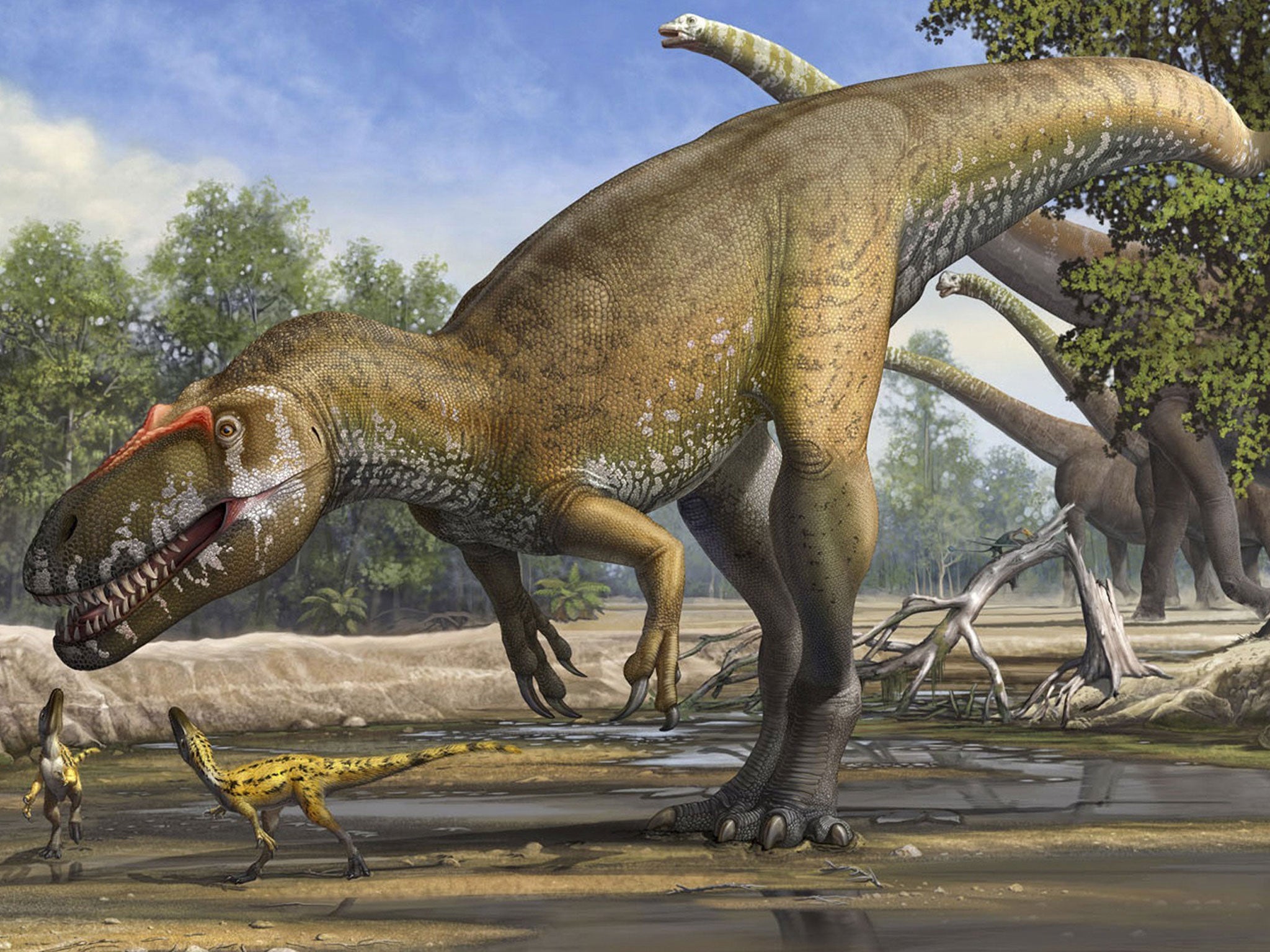Flesh-eating dinosaur with four-inch teeth 'shaped like blades' was 'most ferocious to ever roam Europe'
'Super-predator' weighing five tonnes roamed continent 150 million years ago

Your support helps us to tell the story
From reproductive rights to climate change to Big Tech, The Independent is on the ground when the story is developing. Whether it's investigating the financials of Elon Musk's pro-Trump PAC or producing our latest documentary, 'The A Word', which shines a light on the American women fighting for reproductive rights, we know how important it is to parse out the facts from the messaging.
At such a critical moment in US history, we need reporters on the ground. Your donation allows us to keep sending journalists to speak to both sides of the story.
The Independent is trusted by Americans across the entire political spectrum. And unlike many other quality news outlets, we choose not to lock Americans out of our reporting and analysis with paywalls. We believe quality journalism should be available to everyone, paid for by those who can afford it.
Your support makes all the difference.Scientists believe they have discovered the largest carnivorous dinosaur ever to roam Europe during the Jurassic period, in the form of a 33-foot-long, five-ton “super predator” with blade-shaped four-inch long teeth.
Remains of the Torvosaurus gurneyi were discovered in the rock cliffs of Lourinha, in Portugal, by an amateur fossil hunter in 2003.
They were originally believed to be Torvosaurus tanneri, a dinosaur species from North America.
But closer comparison of the shin bone, upper jawbone, teeth, and partial tail vertebrae suggested that it may warrant the new species name Torvosaurus gurneyi, scientists involved in the discovery have reported.
Christophe Hendrickx, a palaeontologist at the Universidade Nova de Lisboa and Museu da Lourinha in Portugal who has published findings on the discovery said: "It was indeed better not to cross the way of this large, carnivorous dinosaur.”
Mr Hendrickx said fossilised embryos probably belonging to this species were identified last year in Portugal.
Torvosaurus gurneyi could be the largest known meat-eating dinosaur from Europe and the biggest land predator of any kind ever found on the continent during the Jurassic period, he added.

However, he said bigger predators have appeared on Earth after the Jurassic period. "This is not the largest predatory dinosaur we know. Tyrannosaurus, Carcharodontosaurus, and Giganotosaurus from the Cretaceous were bigger animals," he said.
"With a skull of 115 cm, Torvosaurus gurneyi was however one of the largest terrestrial carnivores at this epoch, and an active predator that hunted other large dinosaurs, as evidenced by blade shape teeth up to 10cm," he added.
"This animal, Torvosaurus, was already a fossil for 80 million years before the T. rex ever walked the Earth," Octávio Mateus, co-author of the study said.
The scientists said this is the second species of the genus Torvosaurus. The other one, Torvosaurus tanneri, lived at the same time in North America. It was known from the states of Colorado, Utah and Wyoming and was identified in 1979.
The genus name Torvosaurus means "savage lizard" and its species name gurneyi, honors James Gurney, the author and illustrator of the popular Dinotopia book series.
The findings were published in the journal PLOS ONE.
Join our commenting forum
Join thought-provoking conversations, follow other Independent readers and see their replies
Comments